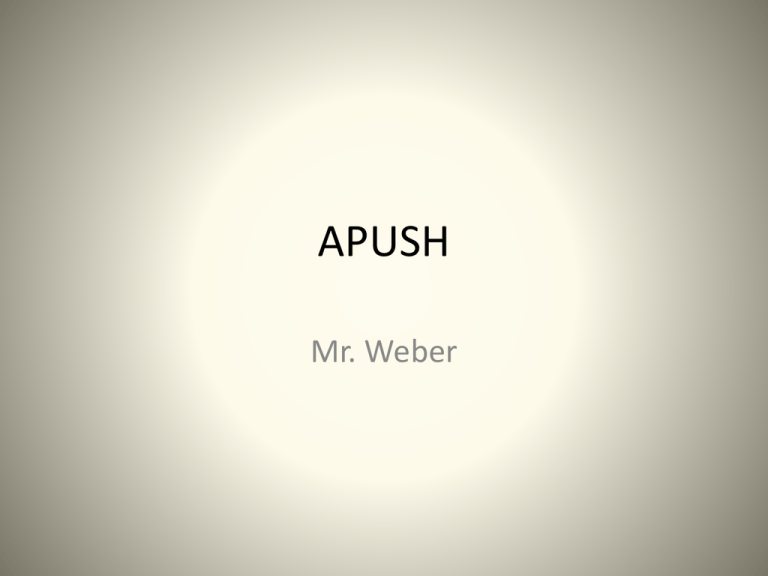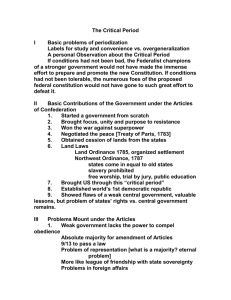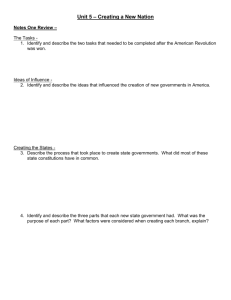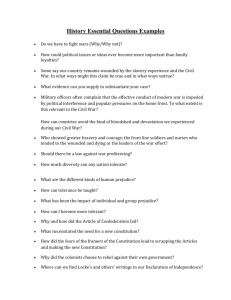apush - Cloudfront.net
advertisement

APUSH Mr. Weber Constitution Writing • You are making a structure of government. – Who will make decisions and how will they be made? – Will there be elected office? How will votes be distributed? – What will happen with judicial decisions? How long will judges be appointed for? Why? – What about the food? What supports will be provided for the needy? – How will you prevent against the tyranny of the majority? – Do we need a student Bill of Rights? Why or why not? Read the U.S. Constitution and make analogies to our school • Suggested analogies: – Advisories as States. – Freshman/Sophomores as working class; Seniors as wealthy elite. – Advisory counsel as Congress (House and Senate) – Student judicial board as Supreme Court – I. America under the Articles of Confederation A. The Articles of Confederation 1. Origins a. Drafting b. Ratification 2. Structure 3. Extent and limits of powers B. Disposition of the West 1. Competing agendas a. Indians b. Settlers c. Land companies and speculators I. America under the Articles of Confederation (cont’d) B. Disposition of the West 2. Congressional measures a. Acquisition of Indian lands i. Northern ii. Southern b. Ordinance of 1784 c. Ordinance of 1785 d. Sale of frontier lands to private groups e. Northwest Ordinance of 1787 i. Plan for future states ii. Recognition of Indian claim to land iii. Prohibition of slavery in region I. America under the Articles of Confederation (cont’d) C. Confederation government under fire 1. Points of controversy a. Unredeemed wartime bonds b. Glut of imported goods c. State tariffs d. State debt relief measures e. State issuance of paper money 2. Shays’s Rebellion a. Objectives and spirit b. Suppression c. Upper-class alarm I. America under the Articles of Confederation (cont’d) C.Confederation government under fire 3. Nationalist impulse c. Main sources of support i. Bondholders ii. Large landholders iii. Merchants iv. Urban artisans d. Initial mobilization II. A new constitution A.Delegates to Constitutional Convention 1. Elite backgrounds 2. Shared experience in struggle for independence 3. Shared aims a. Stronger national authority b. Curbs on “excesses of democracy” II. A new constitution (cont’d) B. Structure of government 1. Points of agreement a. Creation of legislative, executive, and judicial branches b. Congressional power to raise revenue c. Protection of property rights from state infringement d. Middle ground between excessive central power and excessive democracy II. A new constitution (cont’d) B. Structure of government 2. Debate over structure of Congress a. Underlying issues i. Balance between state and federal power ii. Balance between large and small state interests b. Competing proposals i. Virginia plan ii. New Jersey plan c. Compromise solution






